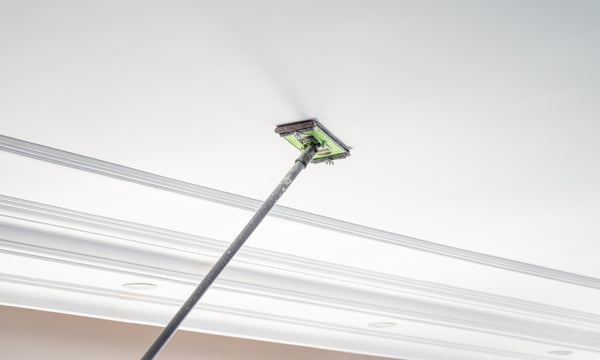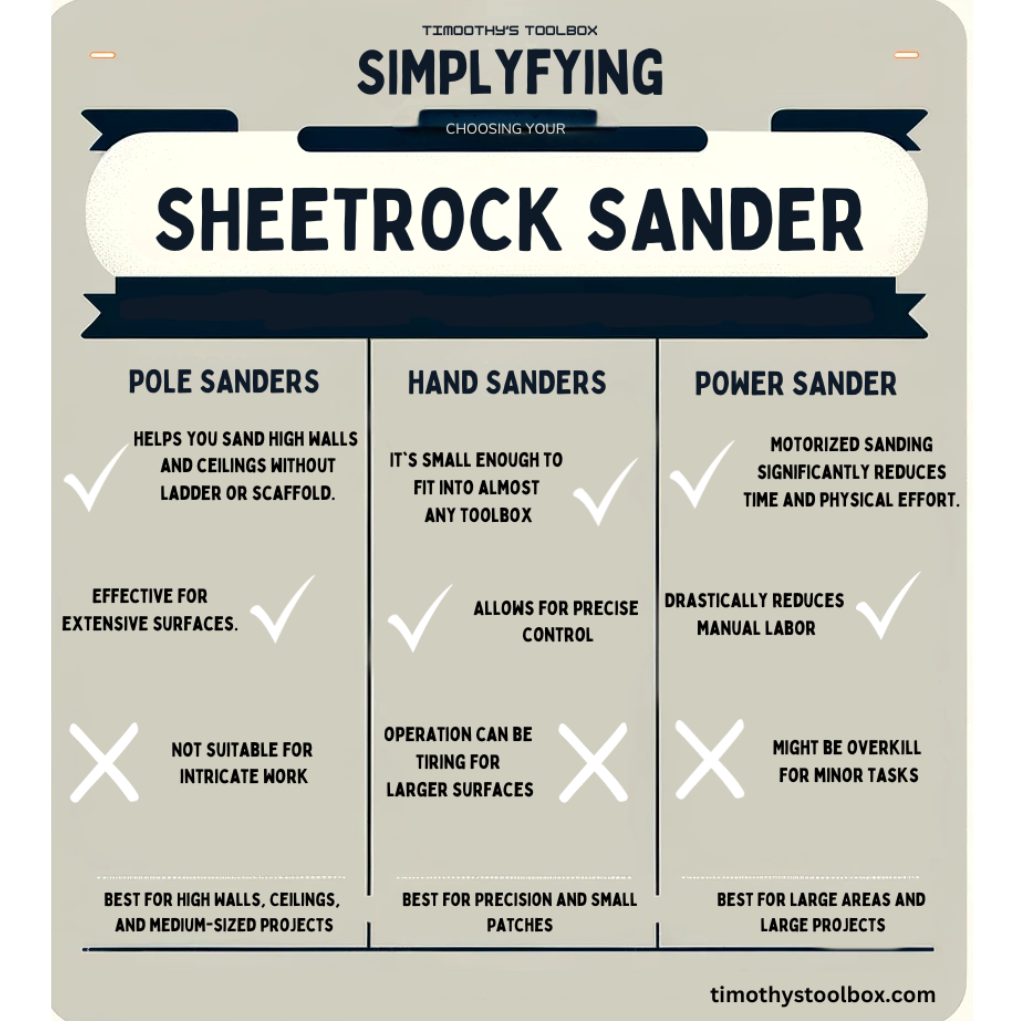Award Winning Service
Award Winning Service


Drywall, commonly referred to as sheetrock in many parts of the U.S., is a standard material used for constructing walls and ceilings. Sanding sheetrock is an essential step in the wall finishing process. Without a smooth finish, imperfections can be highlighted, especially once the wall is painted or wallpapered. A drywall sander, often called a sheetrock sander, is designed to smoothen the sheetrock surface, eliminating imperfections, and preparing the wall for paint or wallpaper. These tools not only make the task more efficient but also ensure a professional finish. In this guide, we'll dive into the world of sheetrock sanders, discussing their types, features, and use cases.
Pole sanders, often known as "extension sanders," are designed to help you sand high walls and ceilings without the constant need for a ladder or scaffold.
Features:
Pros & Cons
Pros:
Cons:

Hand sanders are the quintessential tools for small patches or when precision is key. They are simple yet effective, making them indispensable in any drywall finishing toolkit.
Features:
Pros & Cons
Pros:
Cons:
When it comes to quickly sanding large areas, power sanders are the champions. They come in various types, but most common for sheetrock are orbital sanders.
Features:
Pros & Cons
Pros:
Cons:
Choosing the perfect sheetrock sander boils down to the specifics of your project. Here's a guide to assist in your decision:
Here at Timothy's Toolbox this is when we recommend using each of the types of drywall sanders:
|
Pole Sanders |
Best for High Walls and Ceilings |
|
Hand Sanders |
Best for Precision and Small Patches |
|
Power Sanders |
Best for Large Areas |
Conclusion
Achieving a pristine finish on your drywall project is about more than just skill; it's about using the right tools. At Timothy's Toolbox, we understand the intricacies of such projects, and that's why we stock a wide range of sheetrock sanders and other essential drywall tools tailored to meet your needs. When you prioritize quality and precision, the results speak for themselves. Trust Timothy's Toolbox to be your partner in every step of your drywall journey, ensuring a result that is both professional and satisfying.

{"one"=>"Select 2 or 3 items to compare", "other"=>"{{ count }} of 3 items selected"}
Leave a comment